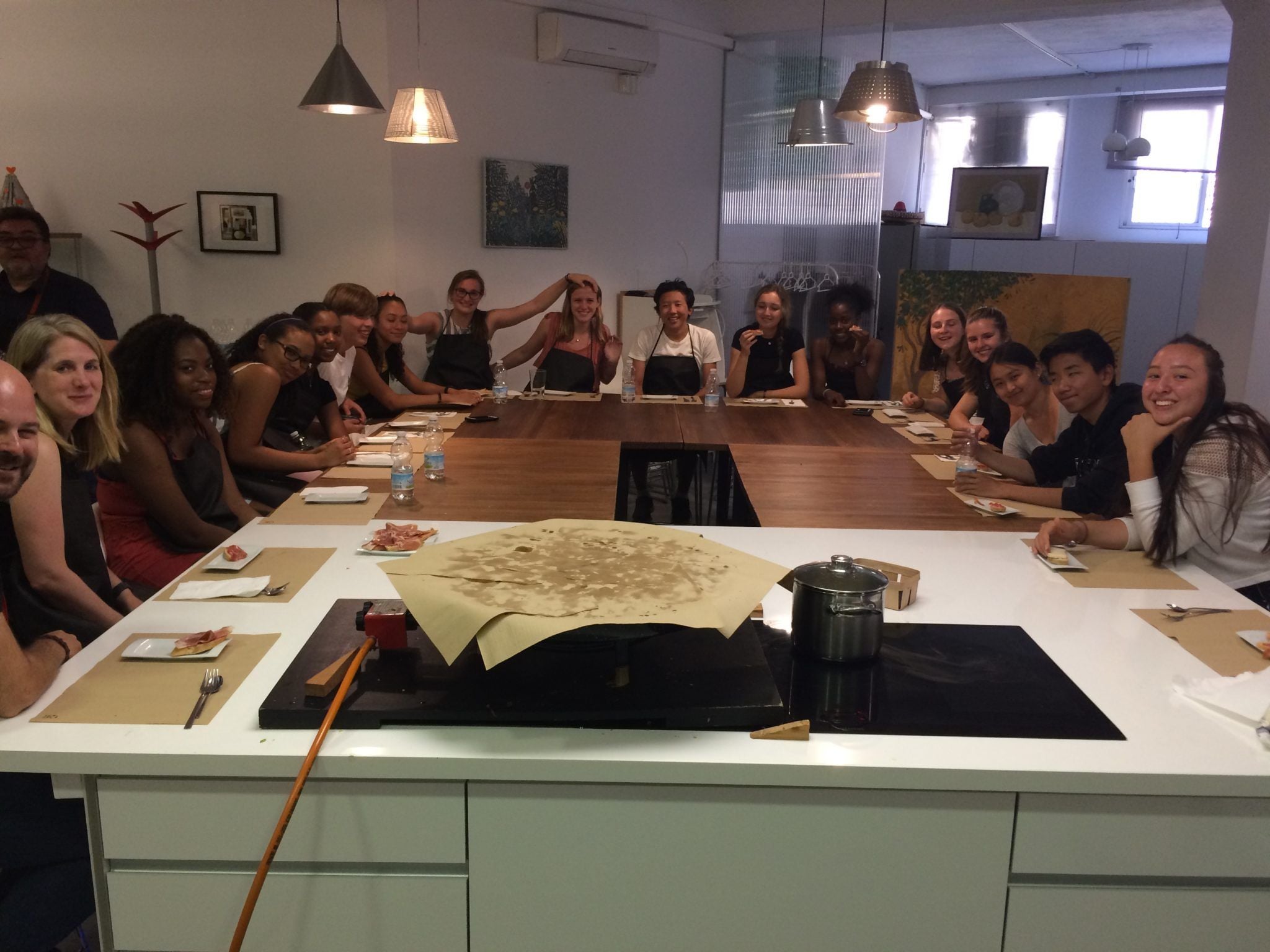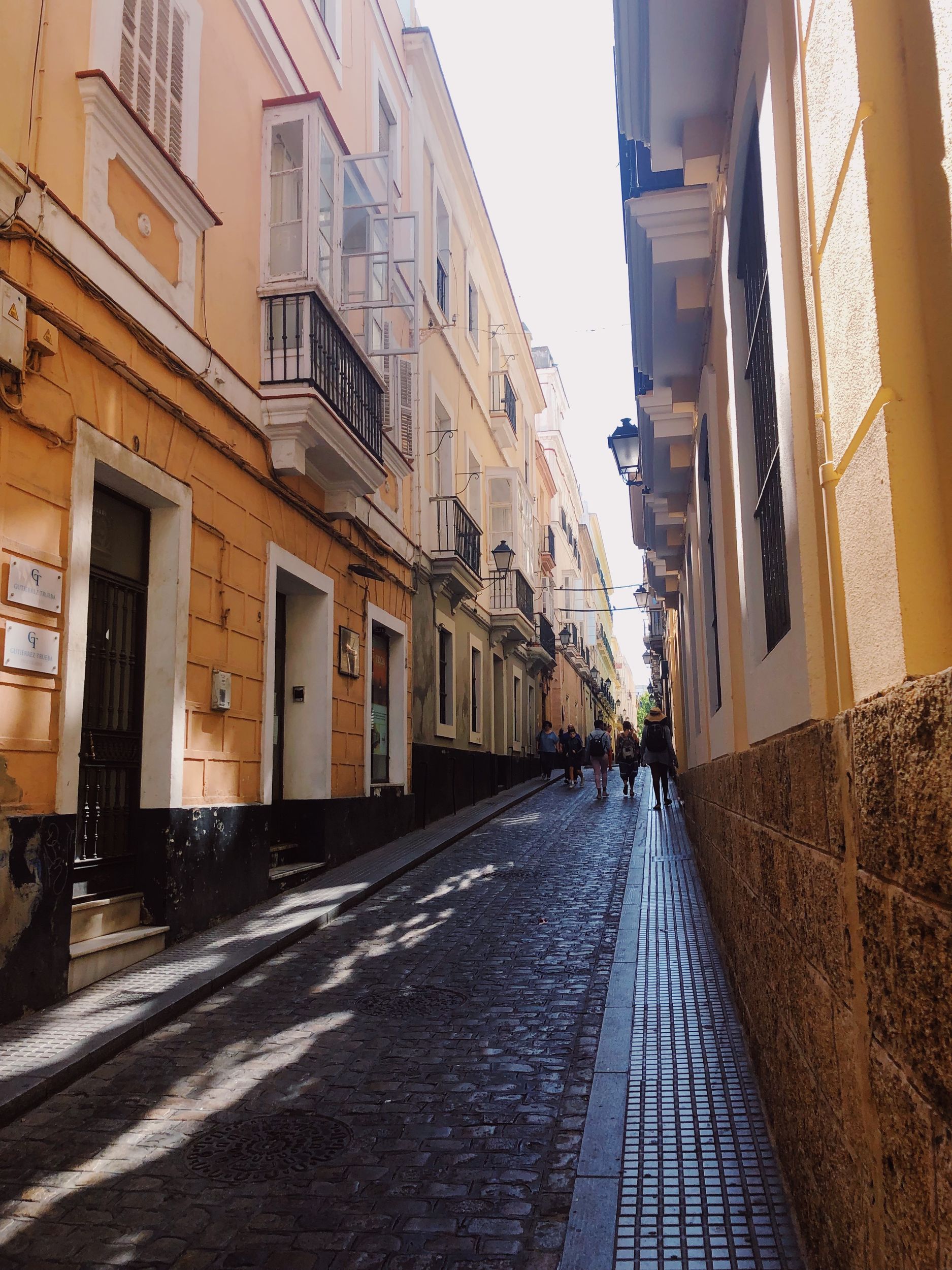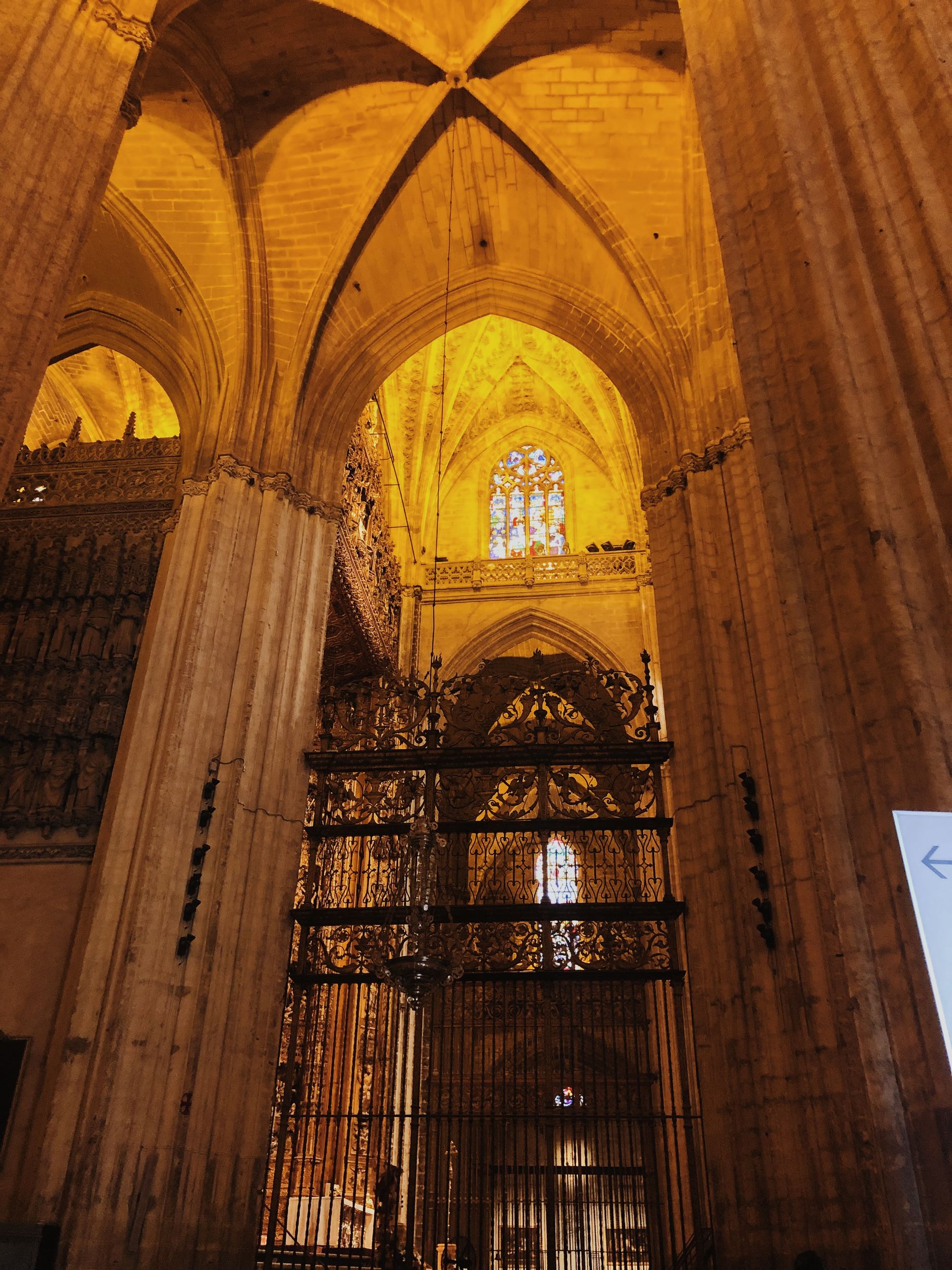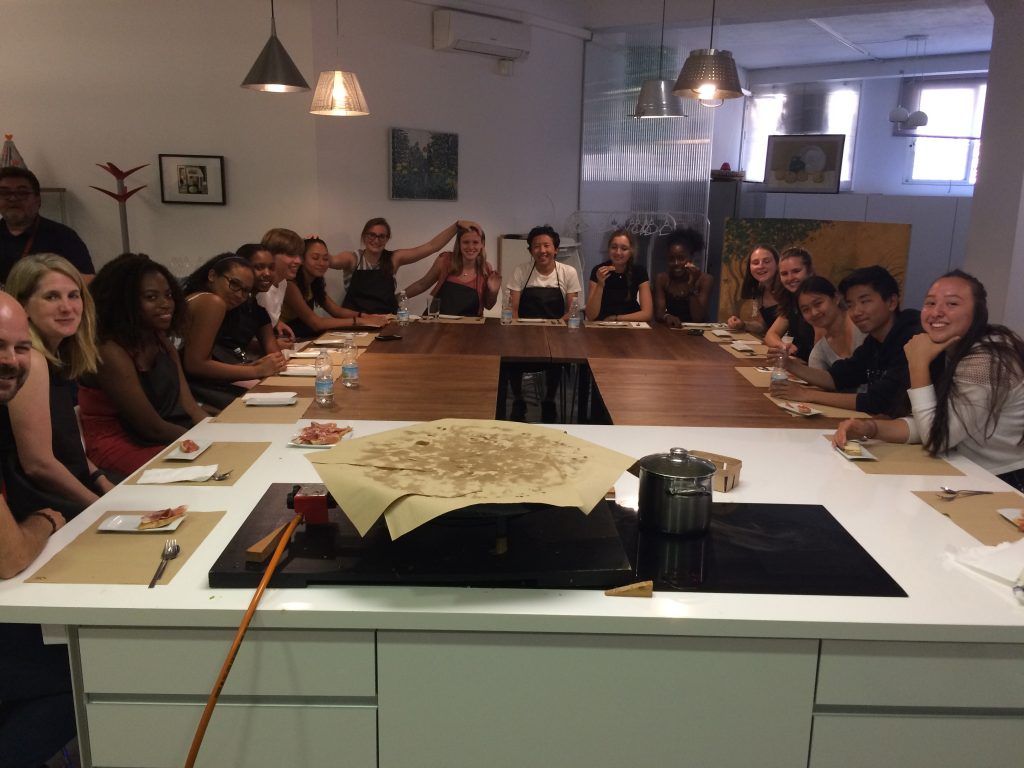David Chen ’20 considers the importance of Spanish culture through its architecture, dance, and religion.
This morning we travelled to Seville, another more central city in Spain, to explore more about the culture and language. As we walked through the many parks and plazas, it was reminiscent of the ‘old part’ of the city in Cádiz that we had explored earlier. The storefronts also had a similar architecture and layout compared to those in Cádiz.
The architecture in Seville was extremely interesting, as we passed by a building that seemed to be made mostly of wood, that stretched across one side of the street to the other. There where a lot of interesting little details that seeped into the architecture of the city; one of these was at Plaza de España, a giant palace that outlined the many cities and provinces in Spain. Our tour guide, Jésus, told us that the shape of the palace, which formed a ‘c’ shape, was supposed to reflect the attitude of the Spanish government to the countries on the American continent. The shape symbolizes a hug, and the palace faces a river that eventually leads to the Atlantic Ocean, and the continent of America. The Spanish government wanted to have good relations with other countries at this point in time, and their architecture reflects this desire. This was one the things that I noticed while visiting Spain: the architecture is often influenced by many little things that occur during the time period.
Another realization that I have come to is that religion is truly an important part of Spanish culture, while visiting the cathedral. The halls were tall and the marble floors imposed the grandeur of the church and religion in Spain. Inside the cathedral lied the tomb of Christopher Columbus, and Jésus (our tour guide) reaffirmed the fact that Columbus travelled to America not for religious reasons, but for economic reasons- to find a more efficient trade route to China and India. However, his tomb was placed in a grand cathedral- which begs the question: why is Columbus’ tomb placed in a church? Though I do not know the answer, I assume that at least part of the reason is because of the immense influence and power that the church had and still continues to have on Spanish culture. Though the church is now mostly visited by tourists and Spanish students such as ourselves, the immense detail and apparent opulence of the cathedral depicts a time where this edifice was the center of cultural and communal life in Seville.
We immersed ourselves in another important part of the culture, dancing! We watched an amazing flamenco performance, similar to the group that came to Deerfield earlier in the school year. However, there were more types and variations of the dance that we watched, and it was just as striking as the first time I saw it, if not more. The outstanding speed at which the dancer’s feet moved combined the complex rhythms of the clapping, singing and guitar playing was mesmerizing. Unfortunately, we did not get to dance ourselves, but it illuminated another aspect of culture in Seville and more broadly, in Spain of the power of dance. One of the only rules that the dancers had was that we could not take photos or videos, because we should experience the dance live and not experience it behind a screen. There was this sense of community and family that was incited by all parts of the performance, which was only enhanced by the occasional cheers of ‘ole!’ from members’ of the group when another was performing. The dance brought people together and I understand why it is such a big part of the culture. I look forward to learning and exploring more of Seville before returning to Cádiz!





